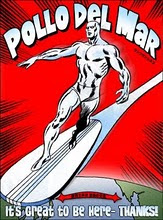The "tipping point" is a useful construct for understanding how things happen in real life--even in politics--and I tried making this point back here with the help of this graphic:
The notion comes from chemical dynamics which is the study of how chemistry happens at the molecular level. Chemical reactions have hurdles too and that cartoon is an easy way of visualizing energy barriers.
The tipping point is just another name for something important in chemistry called the "transition state." Henry Eyring at Princeton introduced the "activated complex" in 1935 as a specific geometric structure that is highest in energy along the way from reactants to products. Michael Polanyi (Eyring's mentor in Berlin) named it the transition state and that name stuck, but the theory, Transition state theory--remains more closely associated with Eyring.
Transition states are ephemeral, just as tipping points are in everyday life. Who's to say when they occur? Yet they are the sine qua non of chemical reactivity. Tweeking them--to lower them in energy--is the goal of most chemical catalysis: link A recent link put up by Instapundit makes this clear.
Showing posts with label 1935. Show all posts
Showing posts with label 1935. Show all posts
Tuesday, August 7, 2012
Thursday, November 3, 2011
Bondage Is A Two-Way Street
The simple "one-way" notion of chemical bonding described back here is part of the "lone pair theory" developed by G.N. Lewis and N.V. Sidgwick. According to that theory, a neutral molecule such as ammonia donates electrons from its lone pair to a metallic Lewis acid. But things like ethylene, not having any lone pairs, confounded the theory, since they too formed neutral metal complexes very similar to ammonia-metal complexes.
In 1935, Linus Pauling introduced the novel concept of backbonding to explain the shorter than expected Ni-C bonds observed in the electron diffraction structure of Ni(CO)4. Like many concepts in chemistry, backbonding is better illustrated than described:
In this simplified scheme above, CO gives electronic juice to the metal's empty and receptive d-orbital (left-hand side). At the same time, the metal gives back electrons to the CO (right-hand side) using a different full d-orbital: the two sketches overlap. They are synergistic.
In 1935, Linus Pauling introduced the novel concept of backbonding to explain the shorter than expected Ni-C bonds observed in the electron diffraction structure of Ni(CO)4. Like many concepts in chemistry, backbonding is better illustrated than described:
In this simplified scheme above, CO gives electronic juice to the metal's empty and receptive d-orbital (left-hand side). At the same time, the metal gives back electrons to the CO (right-hand side) using a different full d-orbital: the two sketches overlap. They are synergistic.
Labels:
1935,
Chemistry is like sex,
electrons,
Lewis,
Pauling
Subscribe to:
Posts (Atom)


